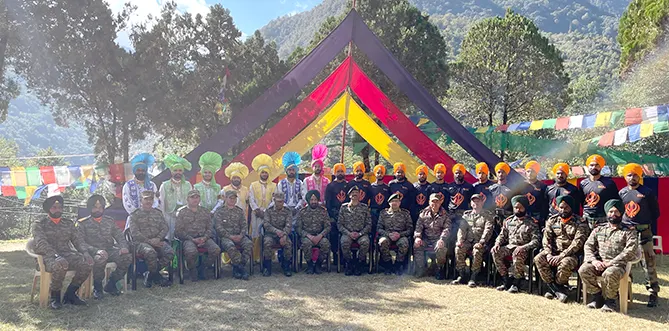In a poignant ceremony held on November 18, the Indian Army commemorated the bravery and sacrifice of soldiers who fought in the Battle of Nyukmadung during the 1962 Indo-China War. The event took place at the Nyukmadung War Memorial, located strategically between Dirang and Sela Pass in Arunachal Pradesh, an area that has significant historical importance due to the fierce battles fought there.
Officers, veterans, and families of the fallen soldiers gathered at the memorial to pay their respects. The ceremony began with a wreath-laying, symbolizing deep gratitude and remembrance for the valiant efforts of the 62 Infantry Brigade that engaged in one of the most challenging confrontations during the war. According to Defence Spokesman Lt Col Mahendra Rawat, this brigade’s remarkable stand against the advancing Chinese forces on this day in 1962 has been indelibly inscribed in the annals of the nation’s history.
On the occasion, students contributed to the spirit of patriotism through performances of traditional songs and dances, which added a vibrant cultural element to the solemnity of the day. A special highlight was the Tibetan dances performed by students from the LDL Monastery in Dirang, enhancing the reverent atmosphere of the memorial.
Additionally, various activities were organized to engage attendees and pay tribute to the soldiers. These included a cycle rally, martial arts demonstrations, and a dog’s performance that showcased the training and capabilities of military working dogs—a testament to the multifaceted nature of modern military operations.
The spokesperson shared a reflective account of the battle, emphasizing the extreme conditions under which the 62 Infantry Brigade operated. Led by Brigadier Hoshiar Singh, the soldiers faced daunting terrain and overwhelming odds while executing a tactical withdrawal. Despite these challenges, they managed to inflict substantial losses on the enemy, embodying the courage and patriotism that is deeply ingrained in the Indian Armed Forces.
This commemoration serves not only as a reminder of past sacrifices but also as a point of national unity and pride, celebrating the resilience of the Indian Army and the enduring legacy of those who fought bravely during a time of crisis.





